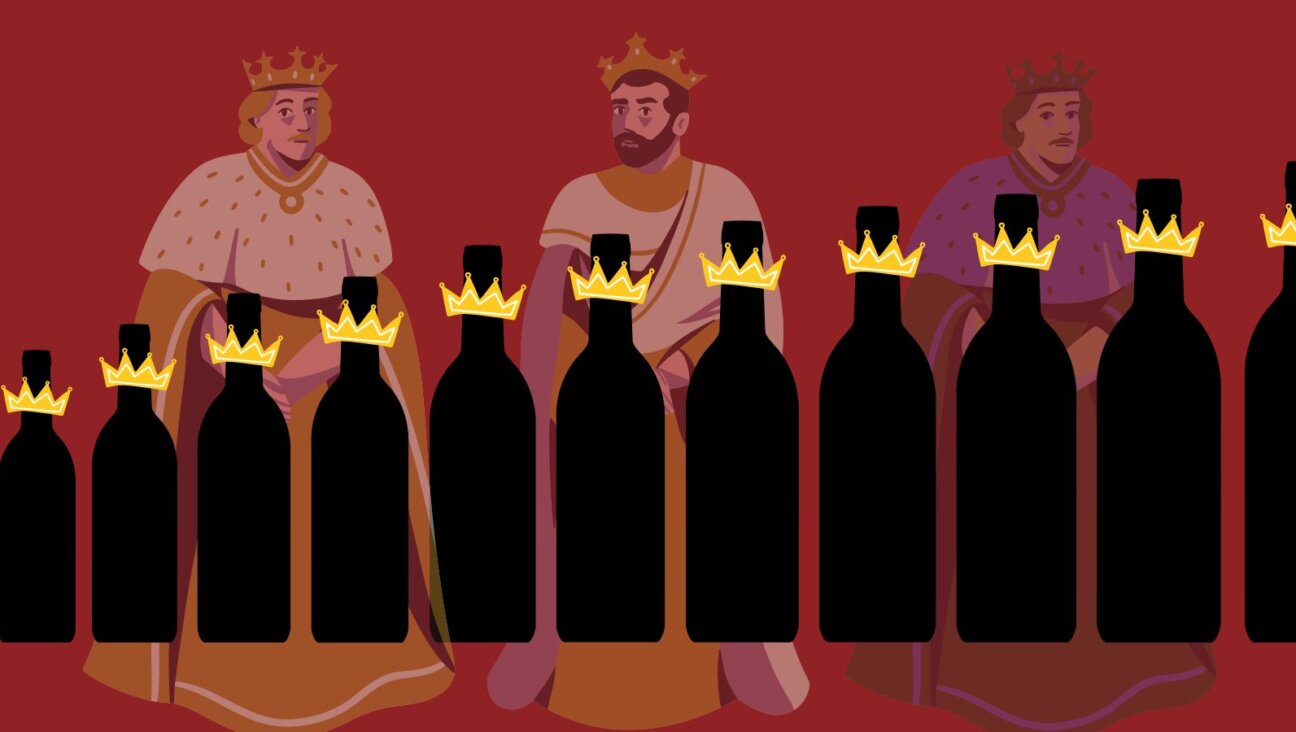Jewish Mobsters Amble From Text to the Panel
With 8 million stories in the Jewish naked city, artists Joe Kubert, Neil Kleid and Jake Allen have given us two riveting ones. With the growing interest in graphic novels and the pictorial evocation of historical events, it’s not surprising that more and more Jewish tales are ending up in panels instead of in type. The latest motif to be picked up by graphic artists is the history of Jewish gangsters.
With the exception of Jack Abramoff, there is something very appealing to the Jewish historical imagination about a thuggish Jew criminal in a fedora. Long eclipsed by gangsterism of the Italian variation, it’s been awhile since Jews were thought of as murderous thugs or vicious criminals. These days, flush with middle-class American success, when Jews appear on a perp walk they’re more likely to be bespectacled, pencil-necked offenders, felonious accountants who lack the arrogant snarl and ghetto panache of real thugs.
Although the weak, Jewish shmendrik stereotype seems to prevail, there was a time when immigrant slums like Manhattan’s Lower East Side were packed to the gills with impoverished Jews and produced a variety of distinctly Jewish toughs — a theme explored in a variety of media, from film (“Once Upon a Time in America,” “Billy Bathgate,” “Bugsy,” “Lansky”) and literature (“Benya Krik”; “Tough Jews”; “Bummy Davis vs. Murder, Inc.,” etc.) to the more academic studies by Jenna Weissman Joselit, Albert Fried and Robert Rockaway. But at times both text and film can fail the imagination, and these graphic novels are filling in the blanks.
While few ever bother to mention it, Jews commit a lot less crime than they used to. When they peddled in the streets and toiled in sweatshops and went home to cramped 300-square-foot tenements they shared with their families, Jews did what they had to in order to make a fast buck and get out. While the vast majority of urban Jews toiled quietly, sent their kids to college and avoided criminal pursuits along the way, a small component of the Jewish community found employment in the fields of numbers-running, bootlegging, pimping and whoring, loan-sharking and contract killing. The Jewish gang Murder, Inc., out of the Brownsville section of Brooklyn, was famous for the last. Nostalgia for the dirty, crowded, manure-filled streets of the Lower East Side notwithstanding, the genre of the Jewish gangster has finally made it to the graphic novel — and in a double dose.
Joe Kubert’s succinctly titled “Jew Gangster” (ibooks, 2005) is a compelling story of a poor Jewish kid named Ruby Kaplan who lives in Brooklyn’s East New York. Kubert employs a well-worn plotline that sees Ruby going to work for a gangster so that he can break free from his oppressive father, who is, of course, mortified by his son’s occupational choice. As Ruby climbs the gangland ladder, from delivery boy to driver to hit man, he crosses his own mob boss by having an affair with his girl. For revenge, the boss vengefully rapes Ruby’s sister. Furious, Ruby goes head to head with the gang leader and ends up killing him, an act for which he is brought to the offices of an unexpected Mr. Big. Along the way, we have a variety of murders and shakedowns.
The plot may sound familiar, but the narrative is so intense and flows so seamlessly, making it impossible not to read it at a breakneck pace. Its vivid language and detailed backgrounds lend a verisimilitude to Kubert’s tale of East New York.
After all, not only did the 80-year-old artist grow up in Brooklyn, but he’s also been working in the cartoon industry since the age of 12, when he started as an inker. Subsequent to that, he worked as an illustrator and editor on numerous comics projects and created his own, as well. He also founded the Joe Kubert School of Cartoon and Graphic Art. At the age of 77, he published “Yossel: April 13, 1943,” a graphic novel about what would have been if Polish-born Kubert had stayed and suffered the Holocaust instead of immigrating with his parents. There is little question that Kubert has the chops, and it is without doubt that “Jew Gangster” is the work of a consummate professional.
Amping up a bit of teacher/student competition, an alumnus of Joe Kubert’s School of Cartoon and Graphic Art is a co-author of another recently published book on Jewish gangsters. Written by Neil Kleid and drawn by Jake Allen, “Brownsville” (ComicsLit) is more complex and better fleshed out than Kubert’s work. Accompanied by Allen’s absorbing, inky-noir imagery, Kleid’s tale of Allie “Tick-Tock” Tannenbaum breaks out of gangland cliché with a story of a gangster by choice, as opposed to the slum-bred thug who does anything to get out of poverty. Son of a reasonably well-off Catskills resort owner, Tannenbaum is taken under the wing of gangsters Jacob “Gurrah” Shapiro and Lewis “Lepke” Buchalter after meeting them at his family’s resort. Ignoring the advice of his father, Tick-Tock makes his way from free-lance gangster to full-time syndicate mobster in the employ of Buchalter.
Assiduously researched, “Brownsville” weaves a based-on-a-true-story tale of a lesser-known mobster and his interactions with some of the best-known Jews in gangland, among them Dutch Schultz, Meyer Lansky and Abe “Kid Twist” Reles. Despite an occasionally confusing chronology, a lack of female players and gangsters who look so similar that it’s hard to tell who’s who, Allen and Kleid have created an absorbing pictorial novella that illuminates one of the more fascinating episodes in American Jewish history.
Eddy Portnoy is a writer living in New York.

I hope you appreciated this article. Before you go, I’d like to ask you to please support the Forward’s award-winning journalism this Passover.
In this age of misinformation, our work is needed like never before. We report on the news that matters most to American Jews, driven by truth, not ideology.
At a time when newsrooms are closing or cutting back, the Forward has removed its paywall. That means for the first time in our 126-year history, Forward journalism is free to everyone, everywhere. With an ongoing war, rising antisemitism, and a flood of disinformation that may affect the upcoming election, we believe that free and open access to Jewish journalism is imperative.
Readers like you make it all possible. Right now, we’re in the middle of our Passover Pledge Drive and we need 500 people to step up and make a gift to sustain our trustworthy, independent journalism.
Make a gift of any size and become a Forward member today. You’ll support our mission to tell the American Jewish story fully and fairly.
— Rachel Fishman Feddersen, Publisher and CEO
Join our mission to tell the Jewish story fully and fairly.
Our Goal: 500 gifts during our Passover Pledge Drive!
























